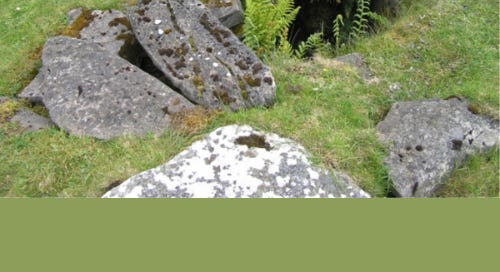The history and origins of sacred wells in Scotland.
Dr Carly McNamara gives us a brief summary of sacred wells in Scotland.
By Dr Carly McNamara
Even today, sacred wells are prevalent across the Scottish landscape. They are frequently associated with the names of saints or other holy persons, such as Mary. Historically, wells were often held to serve as cures for general maladies or sometimes specific illnesses. Prior to the coming of the Reformation, there was a much wider-spread veneration of holy wells in Scotland. It is perhaps unsurprising to find that the sacredness of water and watery locations, such as wells, has a clear and deep association with pre-Christian Celtic culture.
Votive offerings, or the sacrifice of valuable objects, occurred in relation to water – in lakes, bogs, and other bodies of water – as part of ancient Celtic practices. Classical authors, although they cannot be trusted without being critical of their perspective, bias, and intent in writing, do tell us about such sacred sites. Strabo, a Greek philosopher who lived around the time of the birth of Jesus, quoted an earlier writer named Posidonius in reference to the great amount of wealth in gold and silver that was sacrificed in sacred lakes. These claims are demonstrable by looking at the archaeological evidence at sites such as La Tène on the shore of Lake Neuchâtel, Switzerland. This evidence indicates the regular and prolonged practice of making ritual deposits in the water. Looking much closer to home, we can see the religious associations with bodies of water at places like Bath in England. The curse tablets deposited in the spring are clear evidence that the people writing them viewed the water as a means of contacting their deities.
Through these examples we can see the long-term association of holiness and sacredness with bodies of water, especially freshwater. As Christianity reached the island of Britain and spread into Scotland, the belief systems interacted and melded together where possible. We know this melding occurred, or was believed to have occurred, as eighth-century texts, such as the Senchus Már in Ireland indicate quite clearly that that those beliefs or behaviours that did not conflict with the beliefs of Christianity were joined with it. The existence of sacred and healing wells themselves was not an issue, and Christianity and its adherents already had traditions of sacred and healing waters, and were capable of turning existing holy places to the work of their faith.
We see holy water used as a curative in the eighth-century Life of St Columba, written by St Adomnán of Iona. In Book II, chapter 6, we are told that healing comes from being sprinkled with blessed water or dipping blessed bread into water. In Book II, chapter 10, Columba is travelling in Ardnamurchan and calls forth a spring from the rock to enable him to baptise a child. Adomnán further advises that the place was associated with Columba in his own day. We can see Adomnán’s explanation for how some wells become associated with saints in Book II, chapter 11 where a sacred well associated with Paganism is cleansed by Columba and thereafter becomes associated with healing. A sacred well associated with St Maelruba is located on Isle Maree, in Loch Maree, Wester Ross. This well was claimed to cure lunacy in those who drank its water. Of more recent veneration, we can look to the Loch Siant well on the Isle of Skye. The eighteenth-century Old Statistical Account noted that previously offerings were made at the well by the locals, and that invalids travelled or were taken to it to drink from it or bathe in its water as a means of accessing healing, though this had ceased by the time of writing. Even more recently, in 1960, when employees of the Ordnance Survey visited the area, they noted that two crofters pointed out the well and indicated it was a known wishing well.
Looking at the various types of evidence over the last 2000 years, we can trace the history and relationship between sacred wells and the people of Scotland. We should perhaps be astonished that such belief has lasted so long, and that there are people today who still travel to and venerate holy wells across Scotland. If you decide to visit a holy well yourself, in addition to the depth of your connection to your faith, consider also the thousands of people before you who may have visited that same well with the same desire for connection with the sacred and divine healing.



